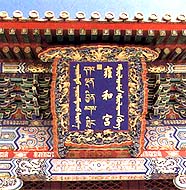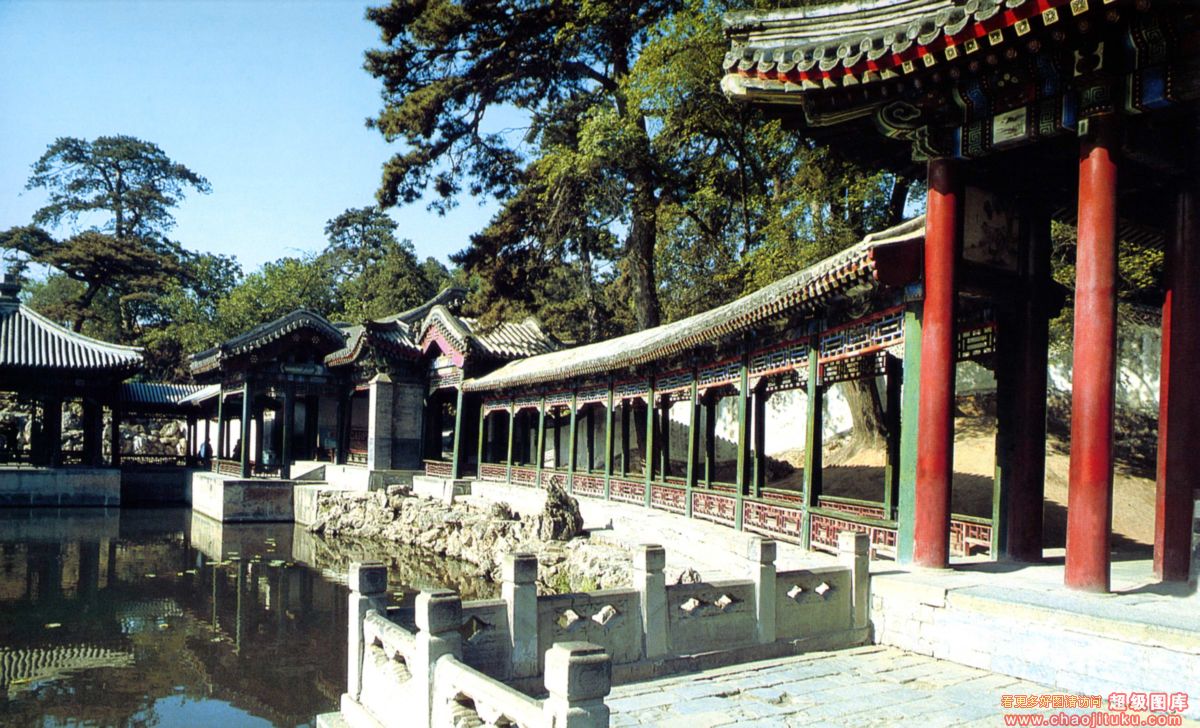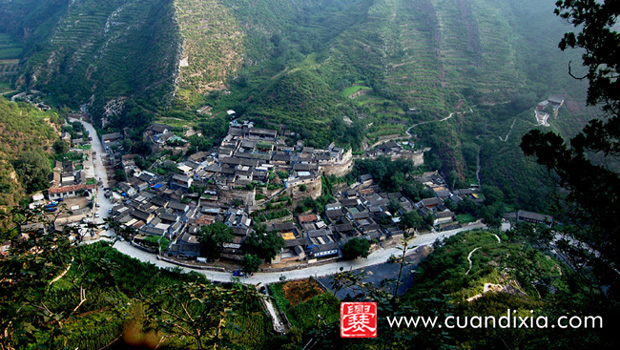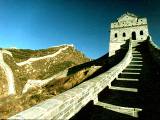Tours and Scientific Excursion
LOC will organize various tours so that you could experience unique culture and art in China. There are two types of tours: City Tours (CT) on 5 June and Optional Tours (OT) on the weekend before and after the conference, i.e. 2 and 8 June.
LOC will also organie a Scientific Excursions (SE) on 8 June.
CT will be scheduled on the afternoon of 5 June when there's no conference activity and it is included in registration fee of general participants and accompanying persons. So you are welcome to join it. One may choose a city tour from four options when you fill in on-line registration form. And one may always return to edit it before 15 April, 2013. An additional ticket to each of the tour will cost $48 and can be purchased on-site at the registration desk.
Booking and Payment: OTs and SEs are not included in registration fee. OTs and SEs can be booked and paid via the webpage http://icdc9.lasg.ac.cn/dct/page/70008. The on-line reservation deadline is 15 April, 2013.
Disclaimer: The services and price specified here are available at the time of writing. However, in the event that minimum numbers (at least 30 persons for each tour) are not met, we reserve the right to alter or cancel the event. Of course, we'll inform you as soon as possible if there's any change.
CITY TOURS
(included in registration fee. Additional ticket $48 can be purchased on-site at registration desk. )
13:30-18:00, 5 June 2012
Note: A ticket will be given to you during on-site registration. Please remember to check if it's consistent to what you booked.
CT1: Lama Temple, Houhai, Hutong

At the northeast corner of Beijing City the traveler will find an elegant and ancient temple known as the Yonghe Lamasery, also Lama Temple, which is the largest and most perfectly preserved lamasery in present day China. Built initially in 1694 during the Qing Dynasty, this building was the residence of Emperor Yongzheng when he was just a prince. However, in 1744 the Qing Dynasty formally changed the status of the dwelling to that of a lamasery, and so Yonghe Lamasery became the national centre of Lama administration.
"Hutong" is a Mongolian word, meaning "water well". It is a typical lane or small street in Beijing that originated during the Yuan Dynasty (1271-1368). During that time, water well is the settlement around which people lived. In the past, Beijing was composed of countless courtyards. Hutongs were formed when people left a passageway between two courtyards to make entering them more convenient.Come and see it by hiring the rickshaw, and you'll have a true taste of Beijing!
CT2: A boat trip to the Summer Palace

Taking a boat trip to the Summer Palace is the most popular travelling fashion of the royal family of Qing Dynasty, especially in summer. Situated in the Haidian District northwest of Beijing City, the Summer Palace is 15 kilometers (9.3 miles) from central Beijing. Being the largest and most well-preserved royal park in China, it greatly influences Chinese horticulture and landscape with its famous natural views and cultural interests, which also has long since been recognized as 'The Museum of Royal Gardens'. The construction started in 1750 as a luxurious royal garden for royal families to rest and entertain. It later became the main residence of royal members in the end of the Qing Dynasty.
CT3: Temple of Heave + Silk Market
The Temple of Heaven has been called the noblest example of religious architecture in China. The Temple was built in 1420 A.D. during the Ming Dynasty to offer sacrifice to Heaven. As Chinese emperors called themselves 'The Son of Heaven' ,they dared not to build their own dwelling, "Forbidden City" bigger than a dwelling for Heaven. After the tour, you may go to famous Silk Market for shopping if you enjoy bargaining.
CT4: Tian'anmen Square + Forbidden City
Lying at the center of Beijing and north of Tian'anmen Square, the Forbidden City, called Gu Gong in Chinese, was the imperial palace for twenty-four emperors during the Ming and Qing dynasties. It was first built throughout 14 years during the reign of Emperor Chengzu in the Ming Dynasty (1368-1644). Ancient Chinese Astronomers believed that the Purple Star (Polaris) was in the center of heaven and the Heavenly Emperor lived in the Purple Palace. The Palace for the emperor on earth was so called the Purple City. It was forbidden to enter without special permission of the empeor. Hence its name 'The Purple Forbidden City', usually 'The Forbidden City'.
Price Includes
- Air-conditioned coach for transfers service from and back to the Venue, and sightseeing program as indicated in the itinerary. Participants may choose not to return with the coach after the tour if they feel like hanging out longer. In this case, participants should take care of their own transportation and safety after the tour.
- Local English-speaking tour guide for transfers and sightseeing program
- Entrance fees to the sites in the itinerary
- Service charge and government Taxes
- Insurance
- Hotel room and breakfast
- Tips to the tour guide (about 50CNY)
- Other personal expenses
Scientific Excursion (optional, at the additional cost)
SE1: Cuandixia- Beijing Forest Ecosystem Research Station (BFERS), 8:00-18:00, 8 June, $55 per person
Cuandixia is located on ancient post road roughly 90 km northwest from central Beijing (about 2 hours drive) in the Jingxi mountain region. Cuandixia was founded during the Ming Dynasty (1368–1644) by members of the Han clan who moved from Shanxi Province. Cuandixia is known for its architecture and natural beauty. It is home to 500 well preserved courtyard homes dating to the Ming and Qing dynasties. Many of these homes have been converted into inns offering food and lodging to travelers. Stone paved lanes and steep staircases help define Chuandixia's architectural identity. The village is a frequent subject of photographers and painters. The surrounding area is full of mountains and trails popular with hikers.

Supported by the Chinese Academy of Sciences (CAS), Beijing Forest Ecosystem Research Station (BFERS) was established in 1990. It is situated in Donglingshan Mountain of Mentougou District of Beijing City, at 39°58'N, 115°26'E. The climate is a typical of temperature semi-humid monsoon. The mean annual temperature ranges from 2 ℃ to 8 ℃ and the precipitation is about 600mm. Natural ecosystems include broad-leaved forest, coniferous forest, shrub lands and subalpine meadows.
BFERS is established to investigate comprehensively the structure, function and dynamics of warm temperate forest ecosystems, representative the zonal vegetation of deciduous broad-leaved forests in east-China. It’s engaged in monitoring water, soil, atmosphere and biological elements of major ecosystems (including warm temperate deciduous broad-leaved mixed forest, Oak forest, Birch forest, Larch forest, Chinese pine forest) using standardized methods. BFERS use large - scale biodiversity monitoring plots, field manipulative experiments, large greenhouse, and ecological modeling to study the function and conservation of biodiversity restoration and reconstruction of degraded ecosystems, response and monitoring of the ecosystem process to global change etc. (http://www.cern.ac.cn:8080/stations/second.jsp?id=410)

Price Includes
- Lunch
- Air-conditioned coach for transfers service and sightseeing program as indicated in the itinerary
- Local English-speaking tour guide for transfers and sightseeing program
- Entrance fees to Cuandixia.
- Service charge and government Taxes
- Insurance
- Hotel room and breakfast
- Tips to the tour guide (about 50-100CNY)
- Other personal expenses
OPTIONAL TOURS (optional, at the additional cost)
Note: The ticket to the tour will be given to you upon on-site registration. The price is slightly higher than the tours offered by some travel agencies because our tours are non-shopping ones and include all the tickets of the sights.
OT1: Temple of Heaven, Tian'anmen Square, and Forbidden City, 8:00-17:00, 2 June, 2012, $65 per person

The Temple of Heaven has been called the noblest example of religious architecture in China. The Temple was built in 1420 A.D. during the Ming Dynasty to offer sacrifice to Heaven. As Chinese emperors called themselves 'The Son of Heaven' ,they dared not to build their own dwelling, "Forbidden City" bigger than a dwelling for Heaven. Going there on Sunday morning, you will find it's also a park for Beijingers to rest and entertain themselves.
Lying at the center of Beijing and north of Tian'anmen Square, the Forbidden City, called Gu Gong in Chinese, was the imperial palace for twenty-four emperors during the Ming and Qing dynasties. It was first built throughout 14 years during the reign of Emperor Chengzu in the Ming Dynasty (1368-1644). Ancient Chinese Astronomers believed that the Purple Star (Polaris) was in the center of heaven and the Heavenly Emperor lived in the Purple Palace. The Palace for the emperor on earth was so called the Purple City. It was forbidden to enter without special permission of the empeor. Hence its name 'The Purple Forbidden City', usually 'The Forbidden City'.
Price Includes
- Lunch
- Air-conditioned coach for transfers service and sightseeing program as indicated in the itinerary
- Local English-speaking tour guide for transfers and sightseeing program
- Entrance fees to Temple of Heaven (including tickets to all the buildings in the park) and to the Forbidden City (including tickets to Treasure Gallery)
- Service charge and government Taxes
- Insurance
- Hotel room and breakfast
- Tips to the tour guide (about 50-100CNY)
- Other personal expenses
OT2 Great Wall (Mutianyu Section) and Ming Tombs (Dingling Tomb), 8:00-17:00, 8 June, 2012, $75 per person

The Great Wall at Mutianyu is a little further away from Beijing than the most popular section at Badaling, but it's not as crowded as others and the views are spectacular. There are cable cars that will take you to the of the wall and back down again but we plan to take one-way cable car up to the Wall and then walk down afterwards. On the way down you may enjoy walking in the woods (forest-coverage rate is over 90 percent).
50 kilometers (31 miles) northwest from Beijing City, at the foot of Tianshou Mountain, is the Ming Tombs Scenic Area, where lies the mausoleums of thirteen emperors of Ming Dynasty (1368 - 1644). Since 1409 when Zhu Di, the first emperor of Ming Dynasty, built his Changling Tomb here, the succeeding twelve emperors had their tombs built around Changling during the next 230 years, covering a total area of over 120 square kilometers (46.3 square miles). This is the best preserved tomb area with the most emperors buried. Built from 1584 to 1590, Dingling Tomb is the mausoleum of Emperor Zhu Yijun, the thirteenth emperor of the Ming Dynasty and his two empresses.
Price Includes
- Lunch
- Air-conditioned coach for transfers service and sightseeing program as indicated in the itinerary
- Local English-speaking tour guide for transfers and sightseeing program
- Entrance fees to Mutianyu and Dingling Tomb
- One way (up) cable car
- Service charge and government Taxes
- Insurance
- Hotel room and breakfast
- Tips to the tour guide (about 50-100CNY)
- Other personal expenses
 Error Tip
Error Tip